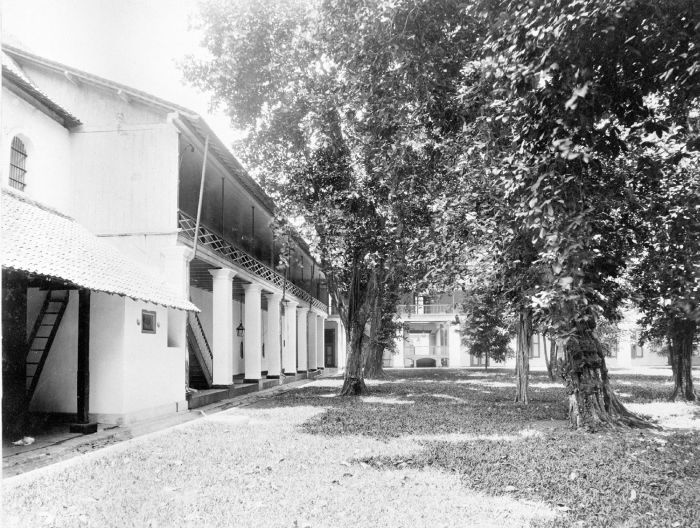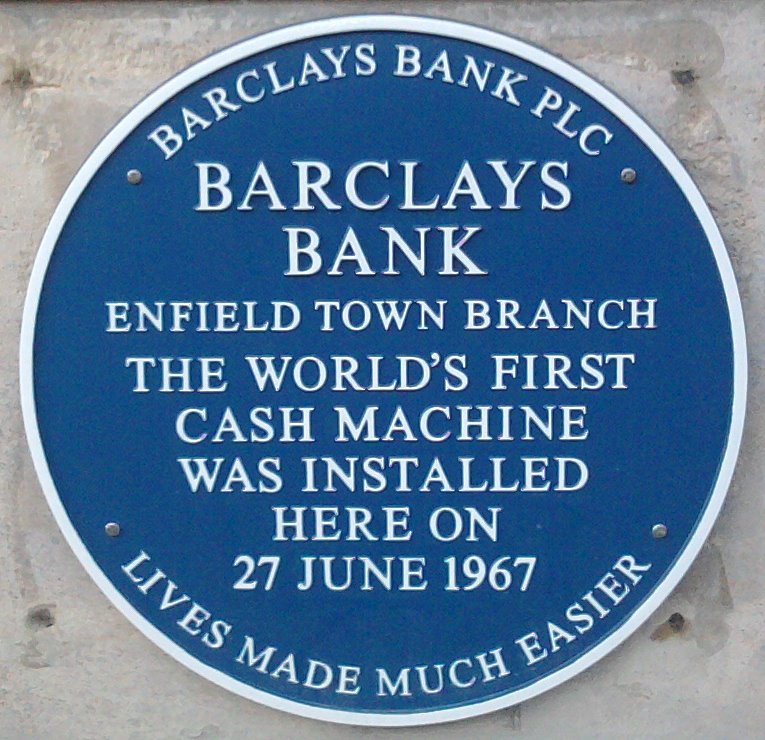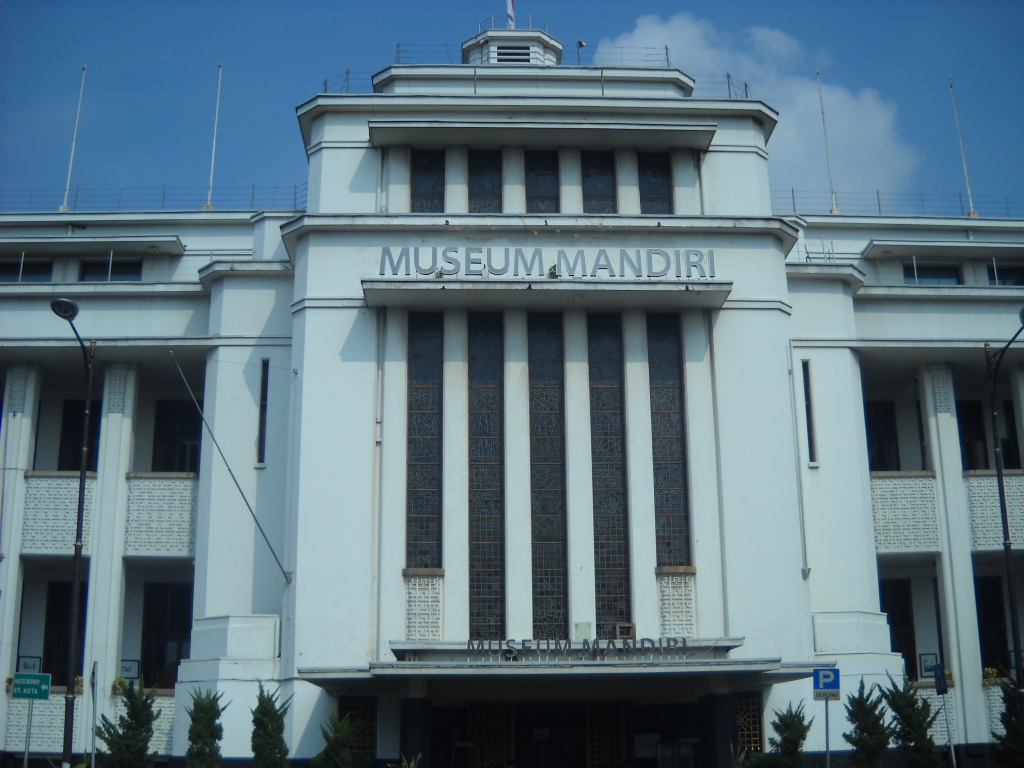|
Bank Indonesia
Bank Indonesia (BI) is the central bank of the Republic of Indonesia. It replaced in 1953 the Bank of Java (, DJB), which had been created in 1828 to serve the financial needs of the Dutch East Indies. History Bank of Java King William I of the Netherlands granted the right to create a private bank in the Indies in 1826, which was named . It was founded on 24 January 1828 and later became the bank of issue of the Dutch East Indies. The bank regulated and issued the Netherlands Indies gulden. In 1881, an office of the Bank of Java was opened in Amsterdam. Later followed the opening of an office in New York. By 1930 the bank owned sixteen office branches in the Dutch East Indies: Bandung, Cirebon, Semarang, Yogyakarta, Surakarta, Surabaya, Malang, Kediri, Banda Aceh, Medan, Padang, Palembang, Banjarmasin, Pontianak, Makassar, and Manado. The Bank of Java was operated as a private bank and individuals as well as industries etc. could get help in the bank's offices. File ... [...More Info...] [...Related Items...] OR: [Wikipedia] [Google] [Baidu] |
Bank Of Java
The Bank of Java (, abbreviated as DJB) was a note-issuing bank in the Dutch East Indies, founded in 1828, and nationalized in 1951 by the government of Indonesia to become the newly independent country’s central bank, later renamed Bank Indonesia. For more than a century, the Bank of Java was the central institution of the Dutch East Indies’ financial system, alongside the “big three” commercial banks (the Netherlands Trading Society, the Nederlandsch-Indische Handelsbank, and the Nederlandsch-Indische Escompto Maatschappij). It was both a note-issuing bank and a commercial bank. Background The first bank founded in the Indonesian archipelago was the , established in 1746, to support trading activity. In 1752, it was renamed (), and was given a mandate to extend loans to employees of the Dutch East India Company. In 1818, that institution closed as a consequence of financial crisis. Dutch colonial period King William I of the Netherlands granted the right to create a pr ... [...More Info...] [...Related Items...] OR: [Wikipedia] [Google] [Baidu] |
Museum Bank Indonesia
Bank Indonesia Museum (, occasionally called Museum BI), also called in English officially as BI Museum, is a bank museum located in Jakarta, Indonesia. It was founded by Bank Indonesia and opened on 21 July 2009. The museum is housed in a heritage building in Jakarta Old Town that had been the first headquarters of the Netherlands Indies gulden (De Javasche bank), the central bank of the Dutch East Indies. The bank was nationalized as Bank Indonesia in 1953, after Indonesia gained its independence. It is located next to Mandiri Museum. History De Javasche Bank was formed in 1828 as a circulation bank of the Dutch East Indies and was responsible for issuing Netherlands Indies Guldens. The building stood in a plot that had been Batavia's Inner Hospital (in Dutch: "Binnenhospital" named "inner" due to its location being inside the wall), which was built in the early 18th century and was abandoned in 1780, as the central hospital was moved to Weltevreden. The building was sold to ... [...More Info...] [...Related Items...] OR: [Wikipedia] [Google] [Baidu] |
Governor Of Bank Indonesia
Bank Indonesia (BI) is the central bank of the Republic of Indonesia. It replaced in 1953 the Bank of Java (, DJB), which had been created in 1828 to serve the financial needs of the Dutch East Indies. History Bank of Java King William I of the Netherlands granted the right to create a private bank in the Indies in 1826, which was named . It was founded on 24 January 1828 and later became the bank of issue of the Dutch East Indies. The bank regulated and issued the Netherlands Indies gulden. In 1881, an office of the Bank of Java was opened in Amsterdam. Later followed the opening of an office in New York. By 1930 the bank owned sixteen office branches in the Dutch East Indies: Bandung, Cirebon, Semarang, Yogyakarta, Surakarta, Surabaya, Malang, Kediri, Banda Aceh, Medan, Padang, Palembang, Banjarmasin, Pontianak, Makassar, and Manado. The Bank of Java was operated as a private bank and individuals as well as industries etc. could get help in the bank's offices. File ... [...More Info...] [...Related Items...] OR: [Wikipedia] [Google] [Baidu] |
Bank Negara Indonesia
Bank Negara Indonesia ( 'State Bank of Indonesia', formerly Bank Negara Indonesia 1946, 'State Bank of Indonesia 1946') is an Indonesian state-owned bank. It has branches primarily in Indonesia, but it can also found in Seoul, Singapore, Hong Kong, Tokyo, Amsterdam, London and New York. It had 2,047 branches (as of 2022) and more than 63 million customers in 2021. It is listed on the Indonesia Stock Exchange as "BBNI". Its market capitalization was 1.029.83 trillion rupiah (approximately US$69 billion). It is the fourth-largest bank of Indonesia in terms of assets. History Early years Bank Negara Indonesia was established on 5 July 1946 both as a central bank and a commercial bank with Margono Djojohadikusumo appointed as the director and Abdul Karim as secretary. It was prepared to be the Central Bank of Indonesia with the task of issuing and handling Indonesian currency. A few months after its establishment, Bank Negara Indonesia officially distributed the ... [...More Info...] [...Related Items...] OR: [Wikipedia] [Google] [Baidu] |
The Maya Declaration
The Maya Declaration is a global initiative for responsible and sustainable financial inclusion issued by the Alliance for Financial Inclusion that aims to reduce poverty and ensure financial stability for the benefit of all. It is the first global and measurable set of financial inclusion commitments by developing and emerging economies. The Maya Declaration is broad in nature, focusing on creating the right environment; implementing the correct framework; ensuring consumer protection measures are taken and using data to inform and track financial inclusion efforts. The declaration was made through AFI's network of financial institutions and, although no vote was taken, its common principles have been implicitly adopted by all the network's members. History Since its launch at the 2011 Global Policy Forum (GPF) in Mexico, members of the Alliance for Financial Inclusion (AFI) have made concrete financial inclusion targets, continued to implement in-country policy improvements and ... [...More Info...] [...Related Items...] OR: [Wikipedia] [Google] [Baidu] |
Financial Services Authority (Indonesia)
Financial Services Authority (; OJK) is an Indonesian government agency which regulates and supervises the financial services sector. Its head office is in Jakarta. After Law on Financial Sector Development and Strengthening was passed, the Indonesian government gave the authority a special status and made it part of the country's law enforcement system. History The agency was created in 2011 under the Law No. 21 of 2011 as an independent institution responsible for regulating and supervising Indonesia's financial sector. It was created to replace the financial oversight functions previously held by Bank Indonesia (BI) and the Capital Market and Financial Institutions Supervisory Agency (Bapepam-LK), ensuring a more integrated and comprehensive supervision of banking, capital markets, and non-bank financial institutions. OJK officially began operations on 31 December 2012, taking over capital market and non-bank financial supervision from Bapepam-LK, and later, on 1 Janua ... [...More Info...] [...Related Items...] OR: [Wikipedia] [Google] [Baidu] |
Receivership
In law, receivership is a situation in which an institution or enterprise is held by a receiver – a person "placed in the custodial responsibility for the property of others, including tangible and intangible assets and rights" – especially in cases where a company cannot meet its financial obligations and is said to be insolvent. The receivership remedy is an equitable remedy that emerged in the English chancery courts, where receivers were appointed to protect real property. Receiverships are also a remedy of last resort in litigation involving the conduct of executive agencies that fail to comply with constitutional or statutory obligations to populations that rely on those agencies for their basic human rights. Types of receivership Receiverships can be broadly divided into two types: *those related to insolvency or enforcement of a security interest *those where either: **a person is incapable of managing their affairs and a court has appointed a receiver to ma ... [...More Info...] [...Related Items...] OR: [Wikipedia] [Google] [Baidu] |
Automated Teller Machine
An automated teller machine (ATM) is an electronic telecommunications device that enables customers of financial institutions to perform financial transactions, such as cash withdrawals, deposits, funds transfers, balance inquiries or account information inquiries, at any time and without the need for direct interaction with bank staff. ATMs are known by a variety of other names, including automatic teller machines (ATMs) in the United States (sometimes RAS syndrome, redundantly as "ATM machine"). In Canada, the term automated banking machine (ABM) is also used, although ATM is also very commonly used in Canada, with many Canadian organizations using ATM rather than ABM. In British English, the terms cashpoint, cash machine and hole in the wall are also used. ATMs that are Independent ATM deployer, not operated by a financial institution are known as "White-label ABMs, white-label" ATMs. Using an ATM, customers can access their bank deposit or credit accounts in order to make ... [...More Info...] [...Related Items...] OR: [Wikipedia] [Google] [Baidu] |
ASEAN
The Association of Southeast Asian Nations, commonly abbreviated as ASEAN, is a regional grouping of 10 states in Southeast Asia "that aims to promote economic and security cooperation among its ten members." Together, its member states represent a population of more than 600 million people and land area of over . The bloc generated a purchasing power parity (PPP) gross domestic product (GDP) of around trillion in 2022, constituting approximately 6.5% of global GDP (PPP). ASEAN member states include some of the fastest growing economies in the world, and the institution plays an integral role in East Asian regionalism. The primary objectives of ASEAN, as stated by the association, are "to accelerate economic growth, social progress and cultural development in the region", and "to promote regional peace and stability through abiding respect for justice and the rule of law in the relationship among countries in the region and adherence to the principles of the United Nation ... [...More Info...] [...Related Items...] OR: [Wikipedia] [Google] [Baidu] |
Bank Mandiri
PT Bank Mandiri (Persero) Tbk or Bank Mandiri, headquartered in Jakarta, is the largest bank in Indonesia in terms of assets, loans and deposits. Total assets as of 2022, were 1.992 Trillion rupiah (around US$133 Billion). As of 2022, Bank Mandiri is the largest bank in Indonesia by total assets. As of December 2022, the bank had 2,364 branches spread across three different time zones in Indonesia and 7 branches abroad, about 13,027 automatic teller machines (ATMs), and 11 subsidiaries, such as: Mandiri Sekuritas, Mandiri Tunas Finance, AXA Mandiri Financial Services, Bank Mandiri Taspen, and Mandiri AXA General Insurance. History Pre-merger Bank Mandiri is the result of the merger made by Indonesian government from four older government-owned banks that failed in 1998. Those four banks were Bank Bumi Daya, Bank Dagang Negara, Bank Ekspor Impor Indonesia, and Bank Pembangunan Indonesia. During the amalgamation and reorganisation, the government reduced the number of branche ... [...More Info...] [...Related Items...] OR: [Wikipedia] [Google] [Baidu] |
People's Representative Council
The House of Representatives of the Republic of Indonesia (, DPR-RI or simply DPR) is one of two elected chambers of the People's Consultative Assembly (MPR), the national legislature of Indonesia. It is considered the lower house, while the Regional Representative Council (DPD) serves as the upper house; while the Indonesian constitution does not explicitly mention the divide, the DPR enjoys more power, privilege, and prestige compared to the DPD. Members of the DPR are elected through a general election every five years. Currently, there are 580 members; an increase compared to 575 prior to the 2024 elections. Its members are called Members of Parliament (''anggota dewan''). History ''Volksraad'' In 1915, members of the Indonesian nationalist organisation Budi Utomo and others toured the Netherlands to argue for the establishment of a legislature for the Dutch East Indies, and in December 1916 a bill was passed to establish a '' Volksraad'' (People's Council).Rick ... [...More Info...] [...Related Items...] OR: [Wikipedia] [Google] [Baidu] |
Bank Central Asia
PT Bank Central Asia Tbk, commonly known as Bank Central Asia (BCA), is an Indonesian bank founded on 21 February 1957. It is the largest private bank in Indonesia, with assets amounting to Rp 5.529,83 trillion (US$308,5 billion) as of 2022. It is currently headquartered at BCA Tower in Jakarta. Bank Central Asia was founded by Salim Group as "NV Perseroan Dagang Dan Industrie Semarang Knitting Factory". It was expanded by banker and conglomerate Mochtar Riady, who took control of the bank. Bank Central Asia expanded rapidly during the 1980s and 90s, BCA works with well-known institutions, such as PT Telkom, Citibank, and American Express. The bank was hit hard during the 1997 financial crisis and the subsequent 1998 May riots. It was in massive debt and as a result it was taken over by the Indonesian Bank Restructuring Agency and sold to another conglomerate group Djarum. BCA has thrived since, and took a major step by going public in 2000. In 2022, Bank Central Asia wa ... [...More Info...] [...Related Items...] OR: [Wikipedia] [Google] [Baidu] |








